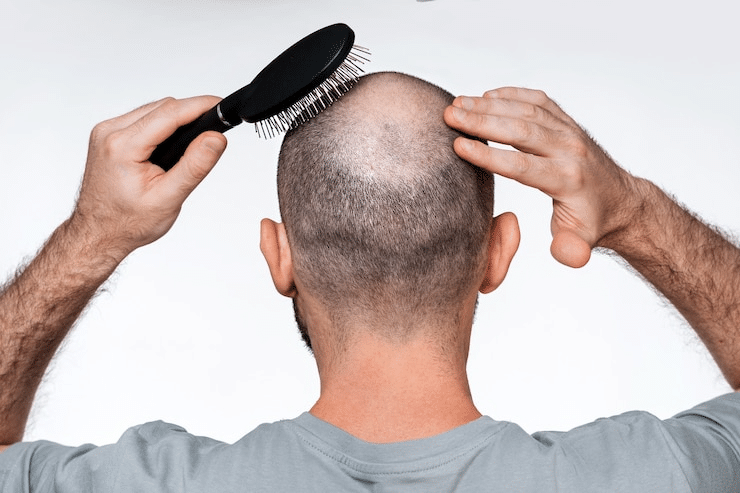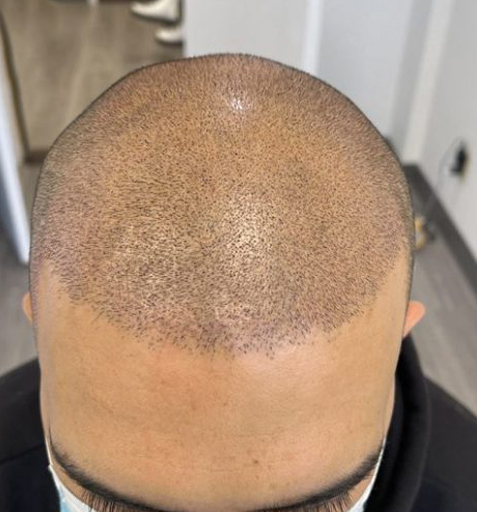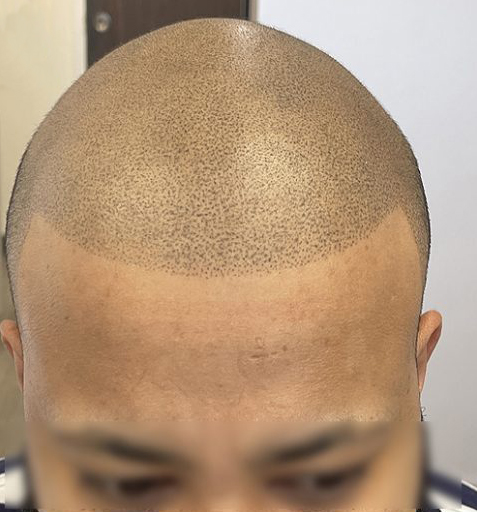
Table of Contents
Scalp Micropigmentation (SMP) is a procedure that can change your life, giving you more confidence and freedom. But the best outcomes do not end after the treatment. SMP Aftercare matters a lot! The key to keeping your scalp looking fresh and natural without any mistakes after SMP.
Want to make your SMP investment count? This guide will help you avoid common pitfalls that can undo all your good work. From safeguarding your scalp to sticking with the right care routines, we have you covered. Stay with us for tips on how to keep your SMP perfect for the years ahead!
Table of Contents
Tiny pigments are used in scalp micropigmentation, which is a non-surgical method of simulating actual hair. It conceals bald spots, increases the density of thinning hair, and corrects uneven hairlines. That’s like “tattooing” for a shaven head or increased hair thickness on the scalp.
However, how one treats their procedure afterwards can later determine its final look and durability.
The skin on the scalp is thinner than most realize, meaning it can absorb products and irritants faster than, say, the forearm. After the last stamp of pigment, a light inflammation usually creeps in; ignoring it by over-washing or scratching turns that harmless swelling into a real red mess. Simple abrasions, salt from sweat, and even airborne pollution can seep into those fresh dots and drag color out-or, worse, blur them together.
Give the dermis a fighting chance by keeping it clean, dry, and embarrassingly boring for at least the first week. Extra attention up front saves time and cash later, because correcting a bad healing is always pricier than preventing one.
Neat aftercare acts like a safety net, guarding against infection while keeping the color fresh and alive. Stick with it and you’re far more likely to step back from the mirror and see a look that feels natural and finished.
Treat the aftercare routine as the final chapter in the procedure-otherwise you risk leaving the story incomplete. Missing steps may show up later as blotchy fades, unwanted irritation, or pigments that settle unevenly.
The chair feels behind you, and washing the scalp suddenly seems like a good idea- yet that impulse can ruin everything. Shampooing too soon shakes the fresh deposits loose and slows the skin’s recovery.
Serves you better: Wait at least four full days before bringing water or cleanser anywhere near your head. When you finally rinse, go slowly, use lukewarm water, and pick a mild, scent-free wash.
A few minutes in the sun might not feel dangerous, but the UV rays are plotting to bleach out the pigment. Bright, unfiltered daylight is one of the silent saboteurs of scalp micropigmentation.
Protective move: Keep the uncovered scalp in the shade for the first month, then lean on a wide-brimmed hat or a 50-plus SPF sunscreen once the skin closes up.
That post-session runner’s high can wait because fresh sweat is toxic to newly layered color. The moisture and salt fight against the pigment settling in.
Prudent schedule: Give the body a week-long breather from saunas, spinning classes, and anything else that leaves you drenched. Pick the lighter activities until the seven-day mark ticks off.
A fresh scalp often itches, yet clawing at the skin may lift pigment or form scars.
What to do: Fight the impulse to touch or rub the area. Use mild moisturizers suggested by the technician to soothe the irritation.
Standard shampoos sometimes hide alcohol or heavy surfactants that dull SMP pigment.
What to do: Switch to sulfate-free and fragrance-free formulations. Ask the SMP technician for a shortlist of approved products.
Optimally, SMP clients return for at least one or two touch-ups; missing these leaves the color uneven.
What to do: Book every recommended session and keep the lines of communication open with the artist.
A thirsty scalp heals more slowly and holds less pigment; dryness also leads to irritation.
What to do: Drink a full glass of water several times a day. Apply technician-approved balms to keep the skin supple.
After initial healing, consistent care ensures the look remains fresh and natural.
What to Do
| Mistake | Impact | How to Avoid It |
| Washing the scalp too soon | Pigment might fade | Wait 4 days before washing |
| Sun exposure | Fading and discoloration | Wear a hat or use SPF sunscreen |
| Sweating excessively | Uneven healing | Avoid strenuous activities for 7 days |
| Scratching or picking | Patchy pigmentation | Use moisturizer to ease itching |
| Using harsh products | Fading and irritation | Use gentle, fragrance-free products |
| Skipping follow-up sessions | Unfinished results | Attend touch-ups as recommended |
| Ignoring scalp hydration | Slower healing | Stay hydrated and moisturize daily |
Sometimes, you may notice unusual redness, extreme itching, or patchy pigment. If anything seems off, reach out to your technician right away. They can guide you on the next steps to protect your results.
Scalp micropigmentation delivers a striking revival of youthful appearance. Yet the process extends beyond the final appointment; vigilant aftercare sustains the effect over time.
Simple choices hold enormous power. Refraining from scratching the area, honoring scheduled follow-ups, and shielding the scalp from direct sunlight can preserve clarity and color.
Caring for SMP is a routine, not a sprint. Follow the outlined protocol, dodge typical pitfalls, and return to a qualified artist for minor touch-ups. The investment in upkeep is modest compared to the lasting confidence of a seamless treatment.






© 2024 HAIRTATTOO.CA | Scalp Micropigmentation & Trichology Centre
